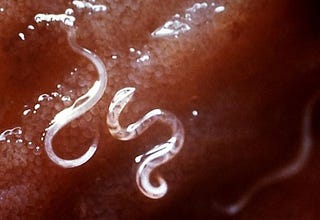1. ‘Octo-Boy’
Deepak Kumar Paswan (nicknamed octo-boy) was born with a parasitic twin attached to his chest. Some people thought that he was a god, while others regarded him as the devil. Eventually, he underwent an operation. It was successful, and he is now living a normal and happy life.
Deepak Kumar Paswan (nicknamed octo-boy) was born with a parasitic twin attached to his chest. Some people thought that he was a god, while others regarded him as the devil. Eventually, he underwent an operation. It was successful, and he is now living a normal and happy life.
2. Boy with 15 fingers and 16 toes
A Chinese boy was born with 15 fingers and 16 toes. With a total of 31 fingers and toes combined, he broke the previous record of 25. The boy underwent a surgery which lasted for 5 hours to have his extra fingers and toes removed.
A Chinese boy was born with 15 fingers and 16 toes. With a total of 31 fingers and toes combined, he broke the previous record of 25. The boy underwent a surgery which lasted for 5 hours to have his extra fingers and toes removed.
3. Foot nipple
A woman went to a doctor for a check up on her foot. Doctors were shocked to find she had a well formed nipple on her foot.

A woman went to a doctor for a check up on her foot. Doctors were shocked to find she had a well formed nipple on her foot.

4. Extra Fetus
A girl in China was born with an immature fetus attached to her back. When the girl turned 11 years old, the fetus was so developed that you could see it’s arms and legs. Eventually, her parents managed to save some money for surgery and successfully got the fetus removed from their daughter’s back.

A girl in China was born with an immature fetus attached to her back. When the girl turned 11 years old, the fetus was so developed that you could see it’s arms and legs. Eventually, her parents managed to save some money for surgery and successfully got the fetus removed from their daughter’s back.

5. Extra uterus
Andreea Barbosa, a twenty year old florida woman, has two uteruses. She gave birth to twins from each side. This rare occurrence only happens once in every five million births.

Andreea Barbosa, a twenty year old florida woman, has two uteruses. She gave birth to twins from each side. This rare occurrence only happens once in every five million births.

6. Girl with 4 arms and 4 legs
A girl named Lakshmi Tatma from India was born with 4 arms and 4 legs. Her parents were laborers and couldn’t afford the expensive surgery to remove the extra limbs. Luckily, thirty doctors from Sparsh Hospital in Banglore did her surgery for free.

A girl named Lakshmi Tatma from India was born with 4 arms and 4 legs. Her parents were laborers and couldn’t afford the expensive surgery to remove the extra limbs. Luckily, thirty doctors from Sparsh Hospital in Banglore did her surgery for free.

7. Extra head
In 2004, a child named Manar was born with an undeveloped twin attached to his head. The extra head could smile and even blink. Only a year later, the extra head was removed, and the child’s mother appeared on the Oprah Winfrey Show with her surviving child. Unfortunately, Manar died in 2006 due to a brain infection.

In 2004, a child named Manar was born with an undeveloped twin attached to his head. The extra head could smile and even blink. Only a year later, the extra head was removed, and the child’s mother appeared on the Oprah Winfrey Show with her surviving child. Unfortunately, Manar died in 2006 due to a brain infection.

8. Baby with two faces
Kangkang was born with an abnormality called transverse facial cleft, which gives him the appearance of having two faces (or wearing a mask). His parents finally managed to save enough money for the expensive treatment at the People Liberation Army’s Military Hospital.

Kangkang was born with an abnormality called transverse facial cleft, which gives him the appearance of having two faces (or wearing a mask). His parents finally managed to save enough money for the expensive treatment at the People Liberation Army’s Military Hospital.

9. ‘Spider Girl’
Ganga and Jamuna Mondal are conjoined twins from West Bengal, India. They are popularly known as ‘Spider Girl’ because they have four arms and three legs, though only two of the legs are working. They have two hearts, two kidneys, one liver, one reproductive organ and they share a stomach. They work at a local circus where they show people how they do everyday tasks.

Ganga and Jamuna Mondal are conjoined twins from West Bengal, India. They are popularly known as ‘Spider Girl’ because they have four arms and three legs, though only two of the legs are working. They have two hearts, two kidneys, one liver, one reproductive organ and they share a stomach. They work at a local circus where they show people how they do everyday tasks.

























































